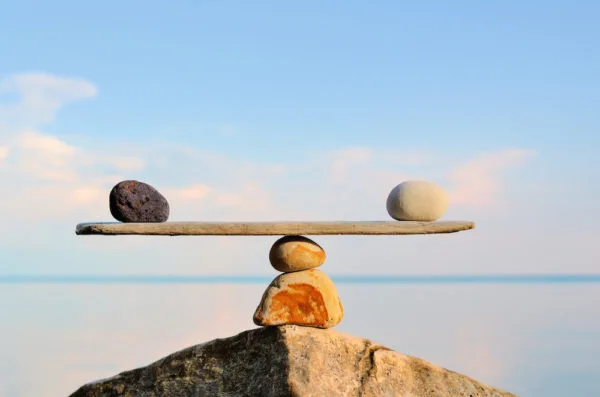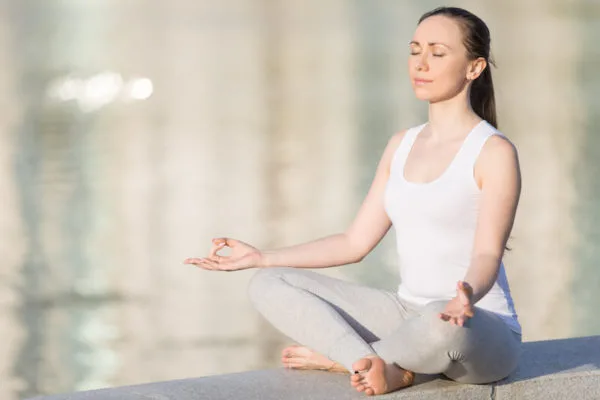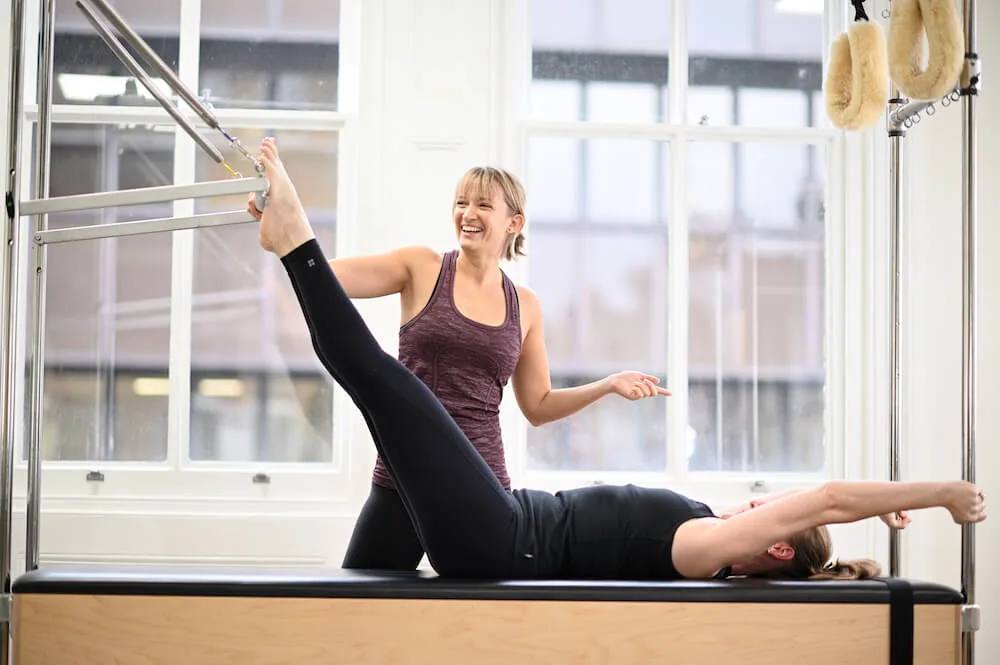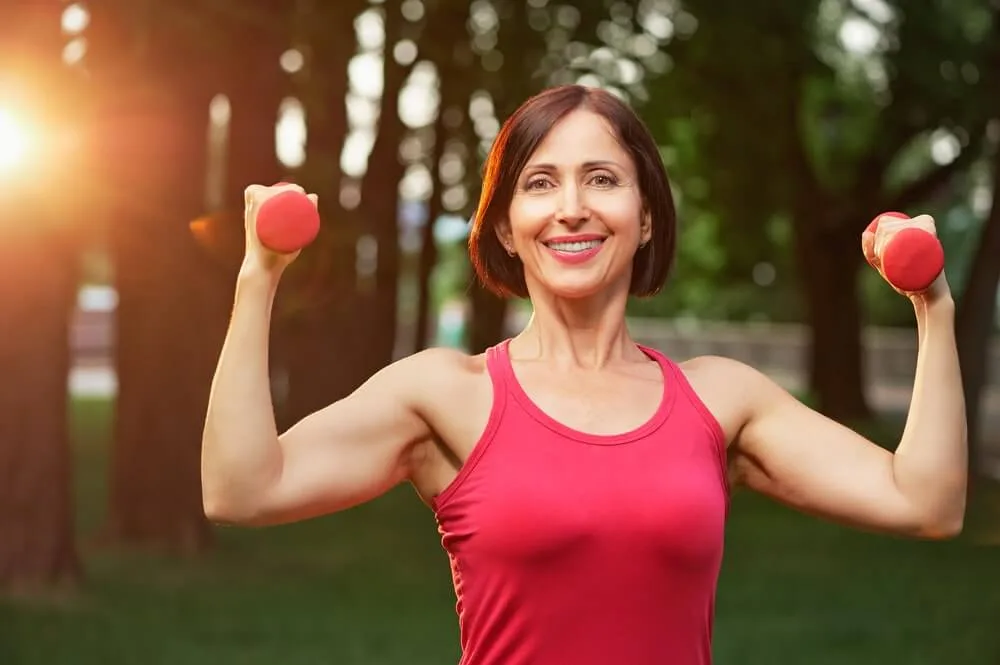Pilates is a method of exercise that has been used by elite athletes and dancers for decades.
But Pilates’s popularity has exploded in recent years, thanks to celebrity endorsements from the likes of Kate Hudson and Jennifer Anniston.
For those of you who don’t know about Pilates – hello, where have you been? – this article will answer that all important question: “what is Pilates?”, give you a brief breakdown of its history, and let you in on the main benefits of the method.
So read on and discover why Pilates has been such a hit.
What is Pilates: a brief history
The method we now know as Pilates was originally called “Contrology” and was invented by bodybuilder and gymnast Joseph Pilates.
German-born Joseph was a sickly child. In order to combat his ill health, he studied and practised lots of different types of exercise programmes. It was through this he began to devise his own unique style of movement.
After coming to England in 1912 for work, Joseph was held prisoner in an internment camp on the Isle of Wight with other Germans at the beginning of World War 1.
He continued to develop his method whilst captive and even tried it out on the other men. In an early version of the Pilates equipment, Joseph even attached springs to hospital beds so that sick inmates could exercise.
The Pilates system really took form, however, once Joseph emigrated to New York in 1926. It was here that Joseph and his wife Clara set up their first studio and attracted the first group of Pilates students.
By the 60s, Joseph and his method was an established favourite amongst New York ballet dancers.
By the 1970s, Hollywood’s elite started to pay attention to the body benefits Joseph’s system offered.
And, by the 80s, the media started to pay attention and Pilates moved into mainstream fitness.
Today there exist a number of different Pilates schools and each teach a variation of the method. But all remain true to the original guiding principles of Pilates – a testament to Joseph’s brilliance.
The Health Benefits of Pilates
Pilates stabilises the body
Pilates is famous for toning abs and strengthening the “core” – or the “powerhouse” as Joseph Pilates called it.But the Pilates method is so much more than this.
Pilates uses slow, controlled and precise movements to strengthen the deep stabilising muscles found in the neck and shoulder, the spine and the pelvis.
This is important because these deep muscles stabilise and support your spine. When they switch off, pain in the lower back or around the pelvis is often the result.
Of course, Pilates does tone the body and can help you get that much sought-after flat stomach. But it also, much more importantly, helps your body to function better and will leave it less prone to injury.
Pilates builds a balanced body
Joseph Pilates was inspired by the classical Greek ideal of the man balance in body, mind and in spirit when creating his method.
The theme of “balance” appears both in the Pilates repertoire itself and the ideology surrounding it.
But one of the most significant ways it shows itself is in the emphasis on balanced muscles development.
Imbalances in the body may occur as a result of genetics, the work that you do, or the sport that you play.
Pilates is a great tool for correcting these because the repertoire incorporates unilateral exercises (meaning you train one side at a time). These type of movements highlight – and help to even up – any asymmetries in the body.
There are many other amazing benefits to Pilates. These include (but are definitely not limited to): increased control, greater flexibility and mobility, and improved coordination.

Pilates is a mind-body activity
Pilates is more than merely an exercise programme designed to sculpt muscles. Like Tai Chi and Yoga, Pilates is a type of mindful movement.
Mindfulness expert Dr Jon Kabat-Zinn describes the concept of mindfulness as “the awareness that emerges through paying attention on purpose, in the present moment, and non-judgmentally to the unfolding of experience moment to moment.”
Given what Kabat-Zinn says, anyone who has ever taken a Pilates class will understand why it is referred to as “mindful exercise” – to get through one successfully requires a lot of focus!
This is because Pilates exercises are all about precision. Therefore, in trying to perform them correctly you need to concentrate intensely on your body and what it is experiencing in the moment.
Doing so creates a harmony between mind and body, and a “present” state of mind.
Importantly, mindfulness as a technique is now celebrated for the way it reduces stress, anxiety, depression – and can even help manage chronic pain.
And, as the above shows, Pilates is the perfect environment to create this mindful state.
Those who practise Pilates with this intention can therefore reap the benefits of mindfulness at the same time as improving their physical health.
Pilates creates good breathing habits
For Joseph Pilates, breathing well was an integral part of good health. He used the Pilates repertoire – particularly abdominal exercises like the “hundreds” – to teach people how to fully inhale and fully exhale.
He saw breathing as a cleansing mechanism for the body and referred to it as the “internal shower”.
And Joseph was on to something.
Optimal breathing helps to stimulate certain muscle groups. It also helps to carry oxygen-rich blood to nourish all tissues, while removing impurities and metabolic waste.
Learning to breathe well through Pilates is also important because shallow breathing has become a chronic problem in our society. This is largely a result of environmental stressors such as pollution and a response to the requirements of our hectic lives.
Shallow breathing is a major issue because when it becomes habitual it can result in chronic stress.
Applied in the right way, Pilates can be a brilliant way to re-educate our bodies, undoing these bad habits, and learn to breathe properly again.

Pilates teaches us skills for life
Joseph Pilates saw his method as a way of life, rather than merely a fitness regime.
Unsurprisingly, he touted Pilates as an essential tool for health. At the same time, however, he also recognised that diet, recreation and mind-set were also vital and he wrote about these in his book Return to Life.
Aside from “breathing”, the other two principles he believed that were vital for good health were “whole body commitment” and “whole body health”.
For him, “Whole body commitment” meant applying your full attention whilst performing the Pilates exercises. In doing he claimed you would reap the most physical reward for your hard work.
Discipline, demonstrated through a regular Pilates practice, was also part of his recipe for wellbeing.
At the same time, Joseph also believed a balanced combination of restorative sleep, work, exercise and play was vital to achieve real and long-term “whole body health”.
Despite being having been written all the way back in 1945, Joseph’s advice is even more relevant today given the stresses and strains modern life puts on bodily health and mental wellbeing.
Achieving the balance in life Joseph talked about is difficult.
And we’re not promising that Pilates is the answer.
But taking a regular Pilates session is an easy and enjoyable way to make a commitment to your mental and physical wellbeing. And it might just be that first step on a journey to “whole body health”.
Can you lose weight with Pilates or is this a myth?
Pilates can be done as part of an overall weight loss programme. However, if your primary goal is weight loss then you will need to make sure that you address your diet and move enough to get your heart rate up or fatigue your muscles. Whilst Pilates can be pretty challenging, unless you join a cardio Pilates class, you are unlikely to increase your heart rate significantly enough for weight loss. However, if you are new to exercise, returning after a long break or recovering from an injury, then Pilates is a great place to get started working on your strength. To find out more about weight loss and Pilates read here.
Can I lose weight with Pilates?
Pilates can be done as part of an overall weight loss programme. However, if your primary goal is weight loss then you will need to make sure that you address your diet and move enough to get your heart rate up or fatigue your muscles. Whilst Pilates can be pretty challenging, unless you join a cardio Pilates class, you are unlikely to increase your heart rate significantly enough for weight loss. However, if you are new to exercise, returning after a long break or recovering from an injury, then Pilates is a great place to get started working on your strength. To find out more about weight loss and Pilates read here.
How to get started with Pilates
To get started with Pilates first make sure you do your research. Not all Pilates is equal. Qualifications for Pilates teachers can range from a single weekend course to extensive training with an internationally recognised provider. Ideally, you want to aim for the best quality teacher that your budget can stretch to. There are several Pilates institutes in the UK that are renowned for their high quality of training including Polestar, APPI, Body Control, BASI and Stott Pilates.
You should decide what you want to achieve through exercise with Pilates. If you are fit and well with no injuries or medical conditions, exercise regularly and want a challenge, then you can work with a Pilates instructor and they don’t need to have any additional qualifications. However, if you have any medical conditions or injuries then you will be better suited to working with a health practitioner with Pilates training, such as a physiotherapist.
Alternatively, make sure that you have consulted with a doctor or physiotherapist so that they can advise whether Pilates is suitable for you. Pilates can be performed as a series of floorwork exercises on a mat but for a more full experience of Pilates exercises, you may want to learn on the large Pilates equipment. This equipment can be used to assist movements to make them easier or to resist movements and make them harder. It also adds a lot more variety, interest and fun to the exercises.
It is more common for Pilates teachers to train in the floorwork exercises before the equipment exercises so it may be easier to find an instructor trained in mat Pilates. Decide whether you ultimately want to exercise in a group or by yourself. Group classes are generally cheaper and more sociable but you get less feedback on your movement technique.
Individual Pilates sessions can be preferable for those who need more assistance to move, want a customised approach, prefer a quiet setting or want more detailed feedback to get the most from the exercises. Pilates can involve a lot of technical details and precise movement, and for this reason, we would recommend a few 1:1 Pilates sessions with an instructor even if you do ultimately want to exercise in a class.
How is Complete Pilates different?
Here at Complete Pilates, we specialise in physiotherapy-led, 1:1 Pilates sessions. We will take a full history from you, including screening for medical conditions and injuries. We will then discuss what you want to achieve through coming to Pilates and help you set some relevant goals. We will assess your movement to determine your flexibility or strength and then we will work on an individualised programme to help you meet your goals.
FAQs:
How is Pilates different to Yoga? Pilates and yoga can seem very similar if you haven’t tried them both and there are definitely some shared exercises. However, Yoga is an ancient discipline originating in India and practised for centuries, whereas Pilates was created by Joseph Pilates at the beginning of the 20th century.
Yoga has a greater spiritual aspect and a strong component of meditation. The purpose of the physical practice of yoga was originally not separate from the spiritual purpose of the meditation and breathing exercises. Pilates was created as a primarily physical form of exercise and does not have the same spiritual basis as yoga. However, Joseph Pilates had a great appreciation for how a healthy body and mind were inextricably linked Read more here.
What type of Pilates is best for beginners?
There is no specific type of Pilates that is best for beginners as all Pilates systems will have easier and harder exercises to do. The most important thing is that you work with someone that knows you are a beginner and can adjust the exercises to suit your level.
If you are joining a class then make sure you know whether it is a beginner class (ideally) or caters for all levels. It is a good idea to communicate with your teacher and get some feedback about whether and when you should progress.
If you’d like to try Pilates for yourself at home, then try our top pick of best Pilates exercises for beginners.
What should I wear to Pilates?
What should you wear to Pilates? You should make sure that you are wearing comfortable clothes that don’t restrict your movements. Since a lot of the exercises take place lying down, making sure that you don’t have zips, pockets or seams to lie on will ensure a more comfortable experience.
Is there anyone who shouldn’t do Pilates?
Pilates is a versatile form of exercise that will suit nearly everyone! However, if you have any kind of medical condition or disability, you should make sure that you consult with a healthcare practitioner to make sure that Pilates is appropriate for you. There are some exercises that should be avoided or modified to accommodate certain conditions such as osteoporosis. You should work with a Pilates instructor who has additional training in working with health conditions, or work as part of a wider team and get your physiotherapist to liaise with your Pilates instructor.
- http://www.pilateswellness.com.au/mindfulness-strengthened-pilates/
- https://www.headspace.com/blog/2017/08/15/shallow-breathing-whole-body/
Looking to do Pilates in London? Our Pilates in Angel, Pilates studios in Chelsea or our Pilates studio in City offer a highly tailored approach to your Pilates training, whether your goal is to manage a health condition, rehabilitate from an injury or improve your strength and fitness.
Education is key:
These blogs are designed to give information to everyone, however, it is important to remember that everyone is different! If you have not seen one of our therapists and have any questions about injuries, what you have read or whether this may be useful to you, please just ask. We are more than happy to help anyone and point you in the right direction. Our biggest belief is that education is key. The more you understand about your injury, illness and movement, the more you are likely to improve.




